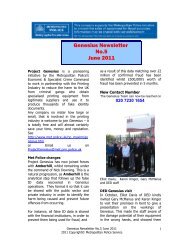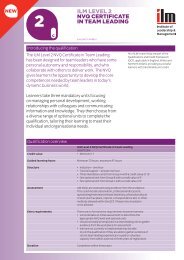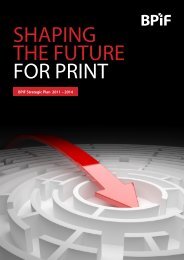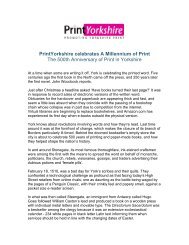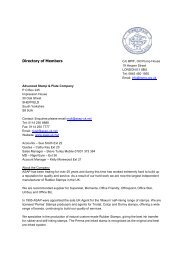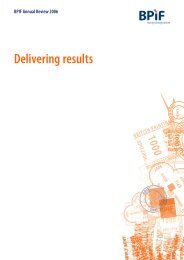Good Manufacturing Practice Guide - British Printing Industries ...
Good Manufacturing Practice Guide - British Printing Industries ...
Good Manufacturing Practice Guide - British Printing Industries ...
Create successful ePaper yourself
Turn your PDF publications into a flip-book with our unique Google optimized e-Paper software.
application techniques for inksproduction techniquesstructural and graphical design4.4.3 <strong>Printing</strong> inks, adhesives and overprint varnishes developed for applying to the nonfoodcontact surface of food packaging are not intended to come into direct contactwith foodstuffs. Where a risk assessment finds that the food will contact a printed orvarnished or adhesive surface, then a suitable functional barrier must be included inthe pack design.4.4.4 There are certain functional coatings which are specifically intended to come intocontact with foodstuffs; these include grease-resistant dispersion coatings, siliconerelease layers and heatseal coatings, but they are usually applied by a convertorupstream from the printer, and specific regulations apply to them. They are outsidethe scope of this GMP guide. Besides the non-food contact surface inks andvarnishes for food packaging, a specific range of inks, adhesives and varnishesfulfilling additional requirements is available for printing on the side in direct contactwith foodstuffs.http://www.eupia.org/index.php?id=32&tx_edm_pi1%5BshowUid%5D=25&cHash=8cfc422918a317124a308b44bd48a9224.4.5 Depending on the nature of the product and its intended use, the followingparameters should be taken into consideration in the product specifications. General‣ existing customer specifications‣ customer’s requirements about the production process‣ printing on the reverse‣ surface/volume ratio between the food and the packagingLegal background‣ legal regulations and limits‣ export from the EU and legal regulations associated with thisCharacteristics of the product packaged‣ consistency: solid, grated, liquid, paste‣ surface area/volume including a consideration of the internal surface area,for example a sponge or wafer‣ physical properties: dry, moist, fatty‣ if necessary: determination of chemical properties (e.g. reaction with volatilesubstances in environment, acid content, temperature dependence, etc).Intended use by the customer and consumer‣ expected contact with edible fats or food regarded as fatty foods 4 inmigration testing‣ preparation of the food together with the material or article both by the foodfiller (sterilization, pasteurisation) as well as prescribed and expectedhandlings performed by the consumer (defrosting, heatingtemperature/duration, cooking/baking)4 Foods regarded as fatty foods are defined in Regulation (EU) No 10/2011P a g e | 19



